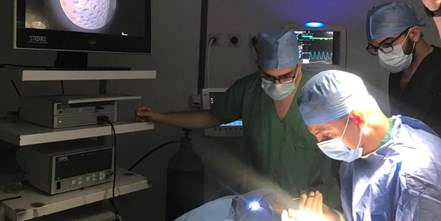



Dr. Ahmed Al-Sobky: The development of medical services in the facilities is in line with the strategic directions of the authority to provide an advanced model for health care
The General Authority for Health Care announced a new success for the Authority’s Al Salam Hospital in Port Said Governorate, after performing the operation to replace the stirrup bone, one of the hearing bones in the ear for a patient with an artificial bone using the endoscope. internal, for the first time inside the hospital.
The Health Care Authority stated that a 33-year-old patient came to the hospital, and she suffers from conductive hearing loss as a result of the stiffness of the stapes bone, which is located in the middle ear and is responsible for delivering sound to the inner ear. The hand of a team of the most skilled ENT doctors in the hospital.
The authority added that ear surgery using endoscopy is considered one of the sophisticated and accurate surgeries that helps in a faster recovery, and helps to quickly stabilize his health condition and his discharge from the hospital according to the latest internationally approved guidelines, practices and treatment protocols.
And the authority added: The medical team that includes both ear surgery consultants and cochlear implants, Dr. Anwar Abdel-Aty, and ear and cochlear implant specialists, Dr. Mohamed Fayez, d. Bassada Shehata, Dr. Paula Emad, in addition to the anesthesia staff, Dr. Esraa Shawky and a. Azza Ramadan, and their nursing assistant team at the hospital.
Dr. Ahmed Al-Sobky, Chairman of the Board of Directors of the General Authority for Health Care, Assistant to the Minister of Health and Population, and General Supervisor of the Comprehensive Health Insurance Project, stressed the Authority’s keenness to develop many medical and treatment services for patients in the Authority’s hospitals in order to provide services and integrated health care in line with the strategic directions of the Authority. And as one of the goals of the comprehensive health insurance project, to achieve comprehensive health coverage for citizens, starting with comprehensive medical examinations, passing through diagnostic services through the laboratory or radiology, and ending with major surgical operations and interventions, which number more than 2500 services that cover all health needs of citizens.